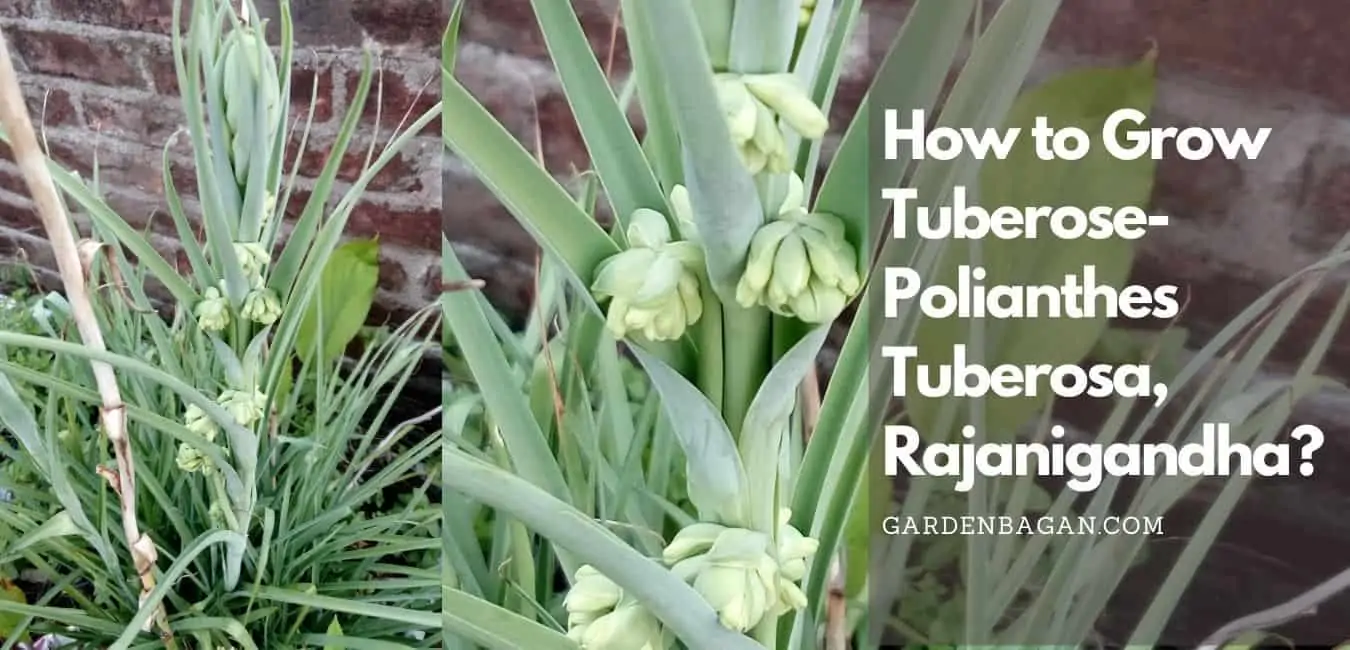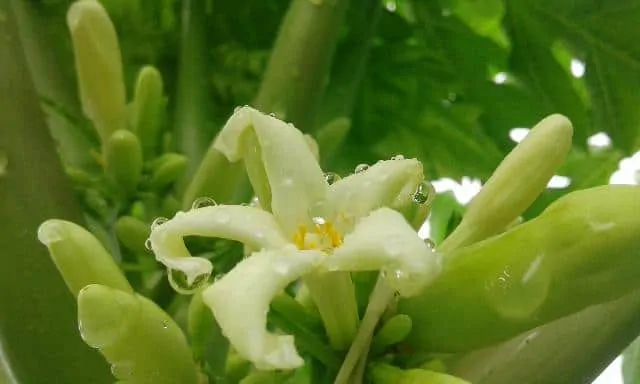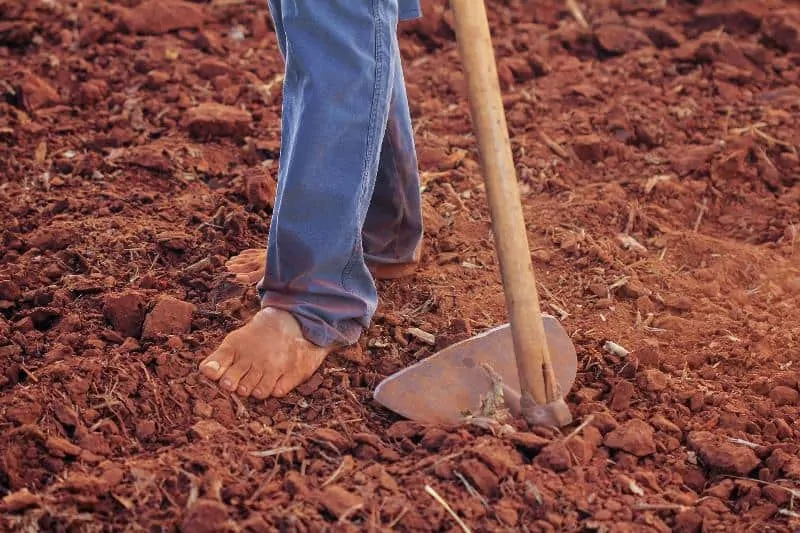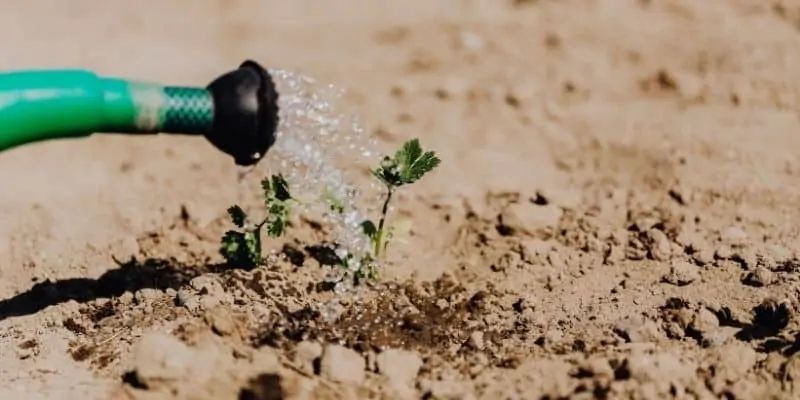Tuberose is a fragrant white flower. It is native to Mexico and currently grown worldwide. The scientific name of Tuberose is Polianthes Tuberosa. It has many common names including Rajanigandha or Nisigandha. Rajani or Nisi means Night and Gandha means Fragrance. Therefore, it is a popular night fragrant white flower. Today I will discuss how to grow Tuberose?

Check out my previous post: Why is my Butterfly Pea plant not flowering?-Clitoria Ternatea
Introducing Tuberose
Tuberose or Rajnigandha is a member of the Asparagaceae family. The scientific name of tuberose is Agave amica. Polianthes Tuberosa is the old classification for the species. Carl Linnaeus first introduce tuberose to botany in 1753. It is a native Mexican tropical night flowering plant.
Tuberose was found in Mexico by European travelers or missionaries in the early 1500. They carry this wonderful plant to the old world. Spain was the first country to cultivate this flowering plant. Later Tuberose came to Asia and Africa with the settlers. India and China are prominent cultivators of tuberose in Asia. It came to India in the early 16th century with European travelers.
Texas and Florida are major cultivators of tuberose in the US. It is mostly grown near gulf areas. Today you can find Commercial tuberose farms in India, China, Africa, Mexico, Morocco, Australia, America, Spain, France, Italy, and many more countries.

Where to Grow Tuberose?
Tuberose is a tropical flowering plant. It grows well in a warm moist environment. It requires a temperature above 70 degrees Fahrenheit or 18-20 degrees celsius.
Tuberose requires bright sunlight throughout the days. Choose a spot to plant tuberose where it can get at least 6 hours of direct sunlight. Minimum 4-hour sunlight is necessary for blooming.
The soil must be rich in organic matter. tuberose plant requires soft sandy or loamy well-drained soil. The tuberose plant can not survive in waterlogged positions.
Rajanigandha or tuberose plants cannot sustain heavy frost. The bulbs start to damage under fridging low temperature. It can survive a minimum of 0 to 1-degree celsius for 2 weeks. Temperature below this range can easily kill the plants.
A tuberose plant can easily survive in soil with 5.5ph to 7.5ph. In simple words, It can sustain acidic to slightly alkaline soil. Still, the ideal ph balance for the tuberose plant is 6.2-7.0 Ph.
Overall you have to choose a spot for a tuberose plant where the soil is nutritious and well-drained with a ph lower than 7.5. It should receive at least 4-6 hours of direct sunlight. Finally, the soil should be moist enough to encourage natural growth.
Ways to Propagate Tuberose
There are three important ways to propagate a Tuberose plant.
- Tuberose Bulbs
- Stem Culture
- Tuberose seeds
Seeds and Bulbs are commonly used for cultivating Tuberose. Whereas, The stem culture technique is a scientific way to multiply plants in the Lab. These lab-grown tuberose plants are later transferred to the fields for cultivation.
The use of tuberose bulbs is beneficial for commercial horticulture. The Bulbs can grow and mature faster than seeds. Also, the quality of the plant and flower can be easily monitored with bulbs.
The most hybrid modern variety of tuberose rarely develops any seed. Therefore, You cannot trust the viability of the tuberose seeds for cultivation.
Bulbs, on the other hand, have a high success rate and more viable for cultivation. A single Bulb can develop dozens of baby bulbs in subsequent years. That’s why bulbs are an economical way to propagate and multiply a tuberose plant.
You Should Also read: Will Tomatoes Grow in Shade?- Kitchen garden facts
When To Grow Tuberose?
You should start sprouting tuberose bulbs outside after 2 weeks of the last frost. Spring is the ideal time to sow a tuberose bulb.
Tuberose is Ideal for USDA zone 9-11. Here you can start in Early March with soil preparation and sowing the bulbs. In USDA zone 7 and 8, You should start sprouting the bulbs indoors 8 weeks before the last frost. You will definitely get a headstart early blooming in your tuberose plant.
If you don’t want to do the indoor sprouting then wait till Mid-March or early April for Sowing the bulbs outside. Make sure the air temperature outside has risen above 60 degrees Fahrenheit. Minimum 20-degree Celsius or 60 degrees Fahrenheit is essential for tuberose to sprout and grow.
How long a Tuberose plant takes to Bloom?
A healthy tuberose Plant can take 80-120 days to start blooming after germination. You have to wait for at least 4 months to see the floral view in your tuberose garden.
A tuberose plant is a slow-growing plant. Sometimes it can take a couple of seasons to start flowering. This is mostly due to small bulb sizes or inadequate sunlight.
How to Grow Tuberose (Polianthes Tuberosa)?
We will discuss the growing techniques of tuberose through its bulbs.
| Common Name: | Tuberose, Rajanigandha, Nisigandha |
| Scientific Name: | Agave amica (old- Polianthes tuberosa) |
| Family: | Asparagaceae |
| Native Climate: | Tropical Mexican Climate |
| Propagation Methods: | Bulb or Seeds Sowing |
| Flower: | Tubular white intense fragrant flowers. |
| Leaves: | Long flat leaf blades grow directly from the bulbs. |
| Root System: | Fibrous Roots |
| Planting Depth: | 2-4 inches. 2.5 times the size of the bulb or the Whole Clump. |
| Spacing: | 6-8 inches apart. |
| Water Requirement: | Moderate, 1 to 1.5 inch per week |
| Sunlight and Temperature: | 6-8 hours of direct sunlight. Minimum 60 to 70 Fahrenheit. |
| Soil Type: | Soft Sandy loamy well-drained soil. Can survive in 6.0-7.5 Ph. |
| Blooming Time: | 80-120 days after sprouting. Summer through Fall Blooming. |
Tuberose bulbs are small round or oval shape stem extensions.
It is a soft swollen part at the base of the plant. This bulb portion is directly connected to the network of the fibrous root system. Tuberose plants don’t have any stem or branch. The long flat leaf blades emerge directly from the bulbs. A floral stem grows from the middle of the leaf cluster once the plant is mature.
Each bulb develops only one flower spike every season. You can cut these floral stems and harvest these as cut flowers.
Soil Preparation for Tuberose

If you really wanna grow a tuberose plant. Then start with soil preparation. Although any commercial soil mix is good for tuberose. Yet, I would suggest preparing a perfect soil mix specific for tuberose. I have seen 30 to 40% more flowers with the soil mix I prepared than any commercial mix. If you want a similar result then give it a try.
- Take 1 Part clean garden soil. Simply take 1 part soil if preparing 3 parts of soil mix.
- Dry the soil in full sun for two days. You can simply dry fry the soil at 100 degrees Celcius for 20 minutes. This is a fast yet resource-demanding technique.
- Then Add 1/2 Part clean sand and 1/2 part grounded wood chips or peat moss to the soil.
- Finally, Add 1 pot full of dry-aged organic compost to the soil mix. Thoroughly mix everything and sprinkle some water.
- Now the soil mix is ready to use. It has enough nutrients to feed the tuberose bulb for a couple of months.
You are a professional gardener and planning for the upcoming flower show. Then add few other ingredients to enrich the soil. In the same amount of soil mix add-
- 50-100 grams of bone meal in each pot.
- 10 grams or 1 spoon of Superphosphate per pot
- 10 grams or 1 spoon full of Potash
- 15-gram NPK 18:18:18 or NPK 8:8:8 (1 -1.5) Spoon
- 1 spoon mustard cake powder or groundnut cake powder per pot
- 2 spoon of wood ash
- Finally, add 1 spoon of any fungicide like Bavstin or Saaf
Gently water the soil mix after adding all these ingredients. Don’t make it soggy. just dampen it to start the chemical reaction. Leave the soil mix in a cool shaded spot for a couple of days.
The soil mix will dry and the reaction will cool down in 4-6 days. Your commercial soil mix for tuberose plants is ready. It is a tried and tested nursery method. Use this soil mix for any plant Bulb.
Tuberose Bulb Selection
Selecting a good quality and healthy tuberose bulb is very important. It is an essential step to decide the best of the best. Otherwise, you may not get the fragrant flowers as expected.
Tuberose bulbs are available in clumps. Each clump contains 1 or two big bulbs accompanied by dozens of small bulbs. In an ideal situation, most of them will develop into plants but only a few will actually bloom.
You should only choose the large bulbs for the plantation. You Can leave the small one as it is with the big ones. They will not bloom this year rather grow in size. Most probably you be will see them blooming in the next season.
Keep in mind bulbs smaller than 2 cm in diameter will not bloom this year. Therefore, only choose the big 2.5 to 3 cm bulbs for high flower yield.
Make sure bulbs are free from any disease. Remove any rotted bulb from the clump. Treat the bulbs with systemic fungicide before sowing.
Available Varieties of Tuberose
- Single Flower
- Double Flower
- Semi-Double Flower
- Varigated Flower
These varieties are different characteristics including color and fragrance. Most of these varieties of tuberose bloom cream to bright white intense fragrant flowers. Choose a tuberose variety that is compatible to you need and local environment.
The original single flower variety has only one layer of petals. They are small to medium in size with an intense sweet fragrance.
The semi-double variety of tuberose has 1 layer of petals with few extra overlapping petals. This extra petal set gives a double-layer look to the flowers.
The double variety has multiple, mostly 3 layers of alternately arranged petals. These are the most attractive tuberose flowers. They have a little scent as compared to other varieties. They are the biggest in the tuberose group.
Sowing Tuberose bulb
You must sow 1 clump of tuberose at a single spot. There is no need to remove the small baby bulbs from the clump. Wait until the temperature exceeds 60 Fahrenheit.
- Place the clump with the pointed tip upward in the soil. Choose a clump with a minimum of 1 bulb bigger than 3 cm.
- Each clump or bulb must have 6-8 inch space around it. Maintain a minimum 6-inch distance between each bulb for healthy tuberose growth.
- Sow only 1 or 2 tuberose bulb clumps in 8-10 inch Container or grow bags.
- Cover The bulbs with 3-4 inches of soil mix. A general rule is to cover the bulb to 2.5 times its diameter. Therefore if a bulb is 3 cm wide then dig a 6-8 cm deep hole in the soil. Make a 5-inch hole for a 2-inch tuberose bulb clump.
- Water abundantly for the first time and place the container in full sun. There is no need for watering until the bulb sprouts. Water only if the soil dries completely.
- In ideal soil temperature i.e 70-75 Fahrenheit, tuberose blubs should sprout in 10 -12 days. It may vary with temperature and moisture level in the soil.
Watering and Fertilization
Tuberose plant-like well-drained soft soil. Still, the soil must have a moist texture for fast growth. During germination and sprouting water once every week. It should keep the soil moist but not soggy. It is very important to understand that these plants cannot survive in wet soil.
Once the plant is ready to bloom adjust watering as required. If the temperature is very high then water frequently else twice a week should be enough.
If you have prepared the soil mix as I suggested then there is no need to feed the plant for the first 40 days. Start feeding it with water-soluble balanced NPK 8:8:8 or a diluted solution of NPK 18:18:18 every 20 days.
After 60 days of sprouting change the fertilizer concentration to NPK 40:16:32. Apply this fertilizer combination once every month from the 65th day.
Your tuberose plant must start blooming within 100 days of germination with this fertilization schedule.
Tuberose Plant Care
- Avoid overwatering the plants. It can cause root rot or increase the chance of a fungal attack.
- Remove dead leaves especially during flower season. Dead leaves can attract several pests and insects.
- Avoid placing the tuberose plant in a windy location. Strong winds can turn and break the flower spikes.
- Provide solid support with thin sticks especially in windy locations. You can club multiple flower spikes together for additional support. Don’t worry this will not harm the plant.
- Harvest the flowers and the spikes to encourage blooming. This will also keep the plant clean and free from any infection.
- tuberose Plants are prone to some pests like aphids and spider mites. Try to avoid water deposition over the leaf surface. Let the soil dry before the next watering cycle. Spray the plant with neem oil and soap water to kill aphids and other pests.
Also Read: How to make potting soil for indoor plants?
Harvesting Tuberose
Tuberose flowers are usually harvested along with the spikes. It is a fragrant cut flower. Therefore, You should cut the flower spike when 3-4 flowers have already bloomed. The rest of the flowers will bloom simultaneously on their own.
Keep the spike dipped in water or cut-flower solution for long-lasting. You can use a 2% sugar solution to keep the tuberose flowers fresh for the whole week.
Commercial cut flower preservative for tuberose contains sucrose with Aluminium Sulphate in diluted form. Maintain the flower spikes at 10 degrees Celcius with the bottom dipped in water especially for long-distance transportation to the market.
Keep reading keep gardening!


